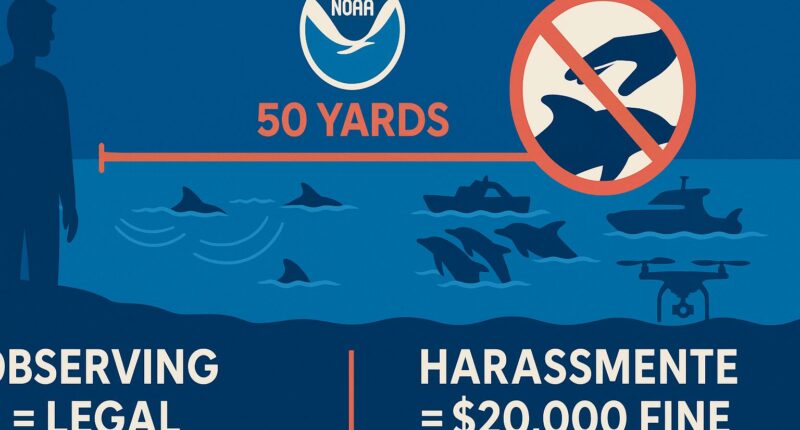Table of Contents
The Legal Reality
It’s not illegal to “talk” to dolphins. No law bans verbal speech at sea. But legality hinges on how you try to communicate and its impact. Under the U.S. Marine Mammal Protection Act (MMPA), actions that disrupt dolphins—like feeding, pursuing, or altering their behavior—qualify as harassment and are federal crimes.
What Counts as Harassment?
- Feeding: Throwing fish to dolphins teaches dependency. It’s illegal and linked to increased calf mortality and aggression toward humans.
- Touching or Swimming: Dolphins might approach you. Touching them, even gently, stresses them and risks disease transmission. NOAA mandates a 50-yard minimum distance.
- Boat/Drone Approaches: Encircling pods or flying drones below 1,000 feet disrupts resting and nursing. Penalties reach $20,000.
The Science Behind Disruption
Dolphins use signature whistles (names) and non-signature whistles (NSWs) for complex exchanges. Recent studies show:
- NSWA: A whistle shared by 25+ dolphins in Florida. Playback tests triggered avoidance, suggesting an “alarm call”.
- NSWB: Used by 35+ dolphins, potentially a “social query” like “what’s happening?”.
Interrupting these exchanges—by luring dolphins with sounds or invading their space—can fragment social groups and cut resting time by 40%.
Ethical Weight
Dolphins exhibit cultural transmission: Calves learn hunting tactics from mothers, and humpback whales share songs across oceans . Their communication mirrors linguistic patterns once deemed uniquely human. Forcing interaction isn’t just illegal; it’s silencing another language.
Enforcement Works
Report violations (e.g., feeding) to NOAA’s hotline (1-800-853-1964). Fines fund conservation, not bureaucracy.
Bottom Line
Whistle at dolphins from shore? Legal. Paddle toward them to “chat”? That’s harassment. Their intelligence demands distance; our respect ensures their survival.

Mr. Das, a certified pharmaceutical scientist, holds a Bachelor of Science in Pharmaceutical Sciences and passionately contributes to dolphin conservation as a member of the committee in Bangladesh.









